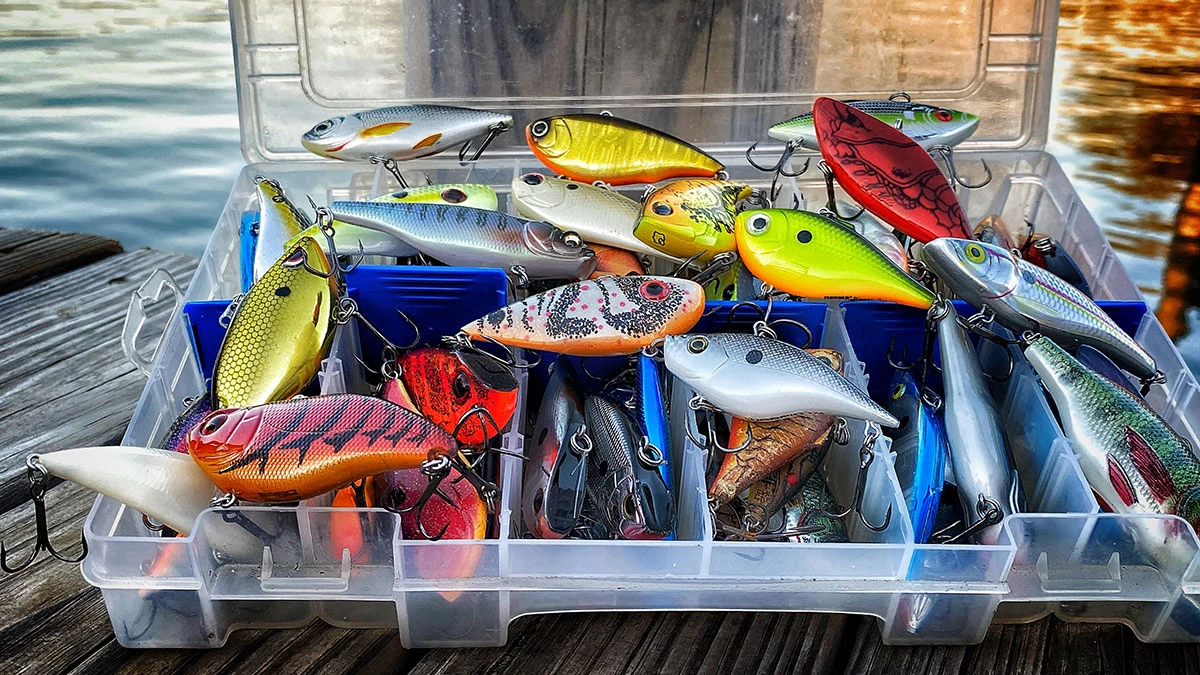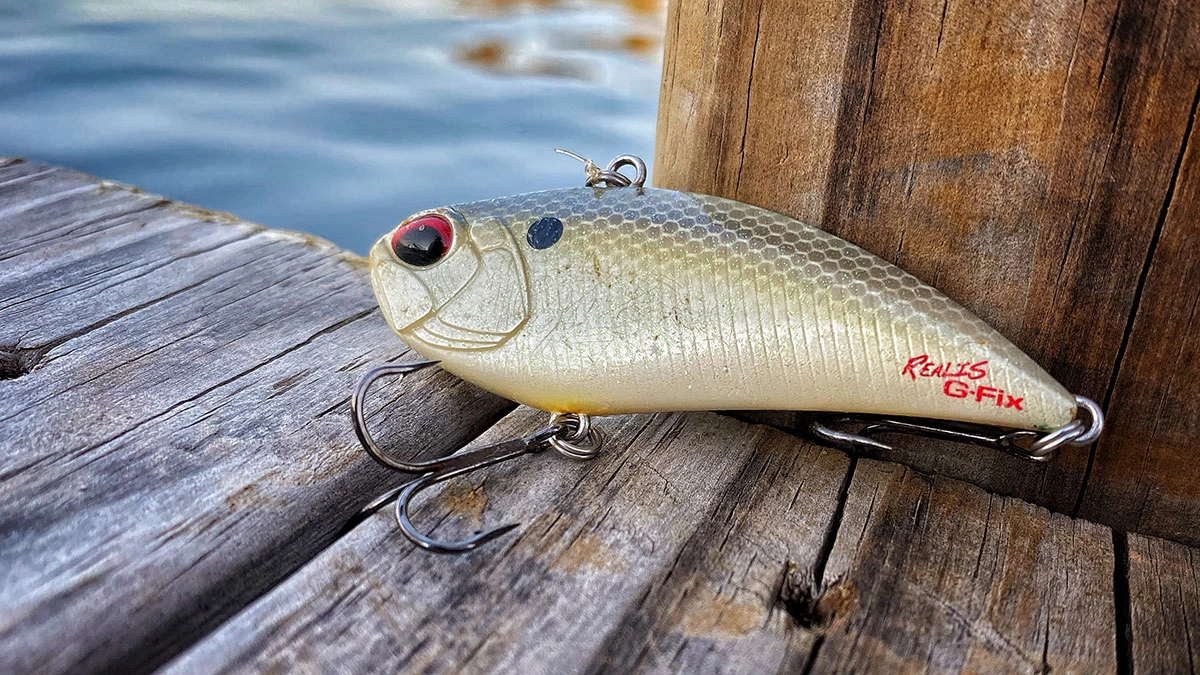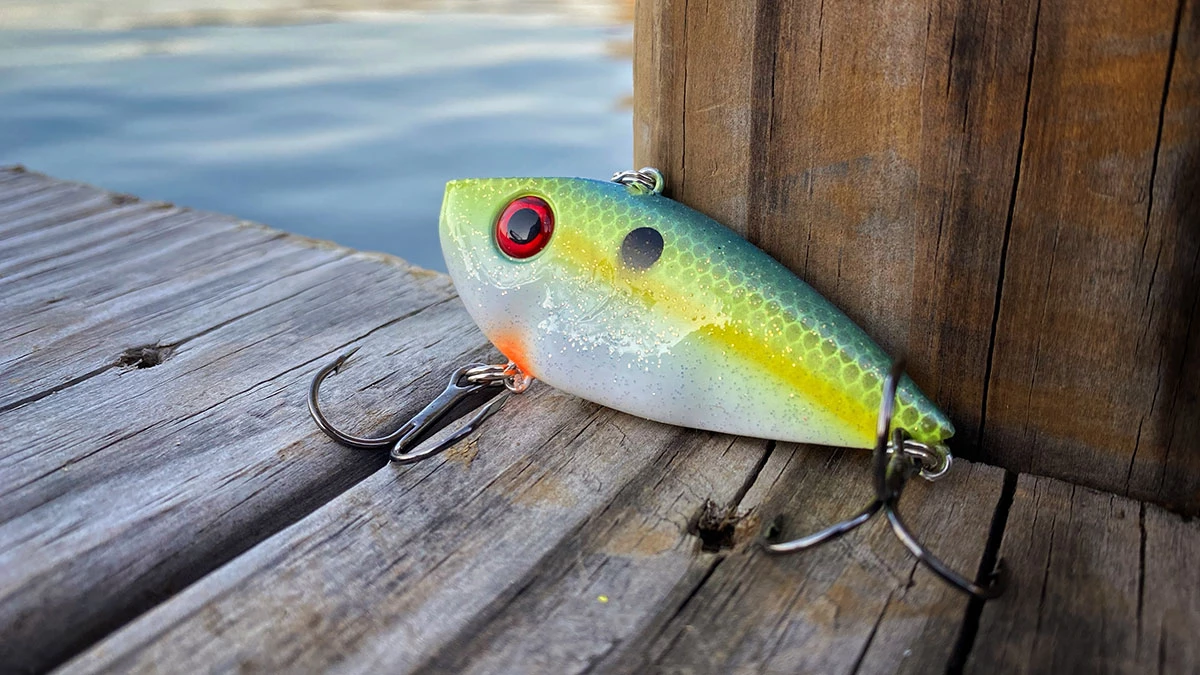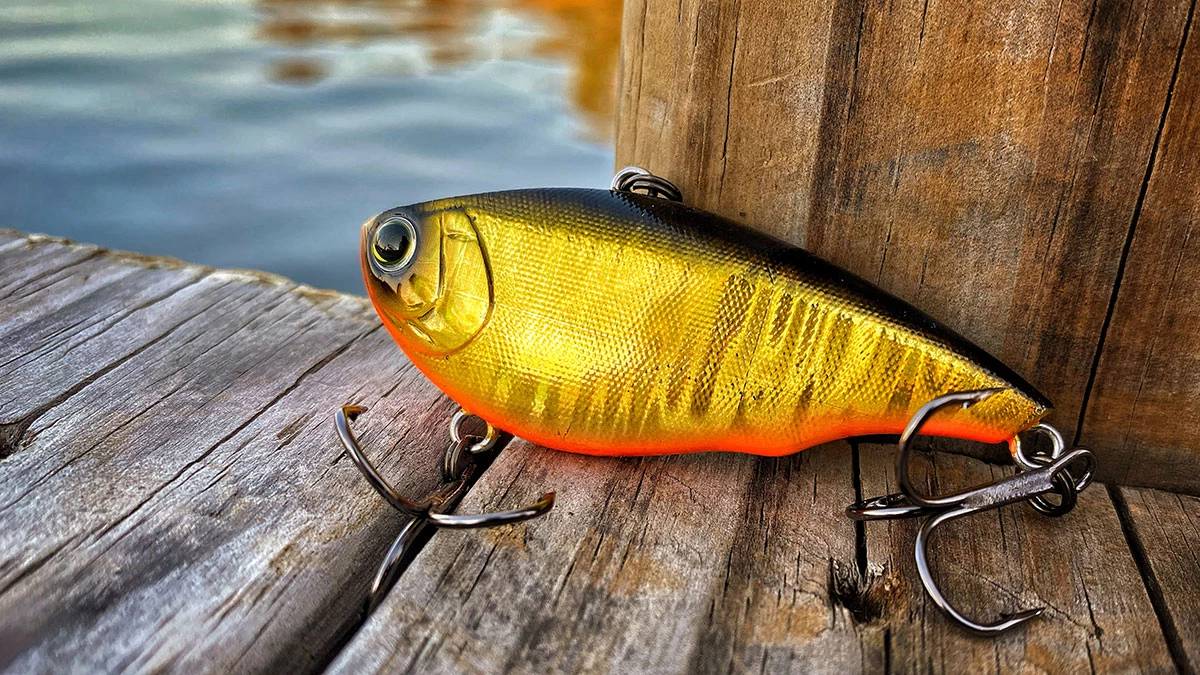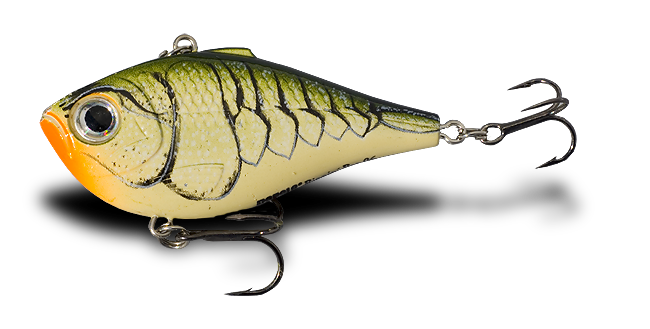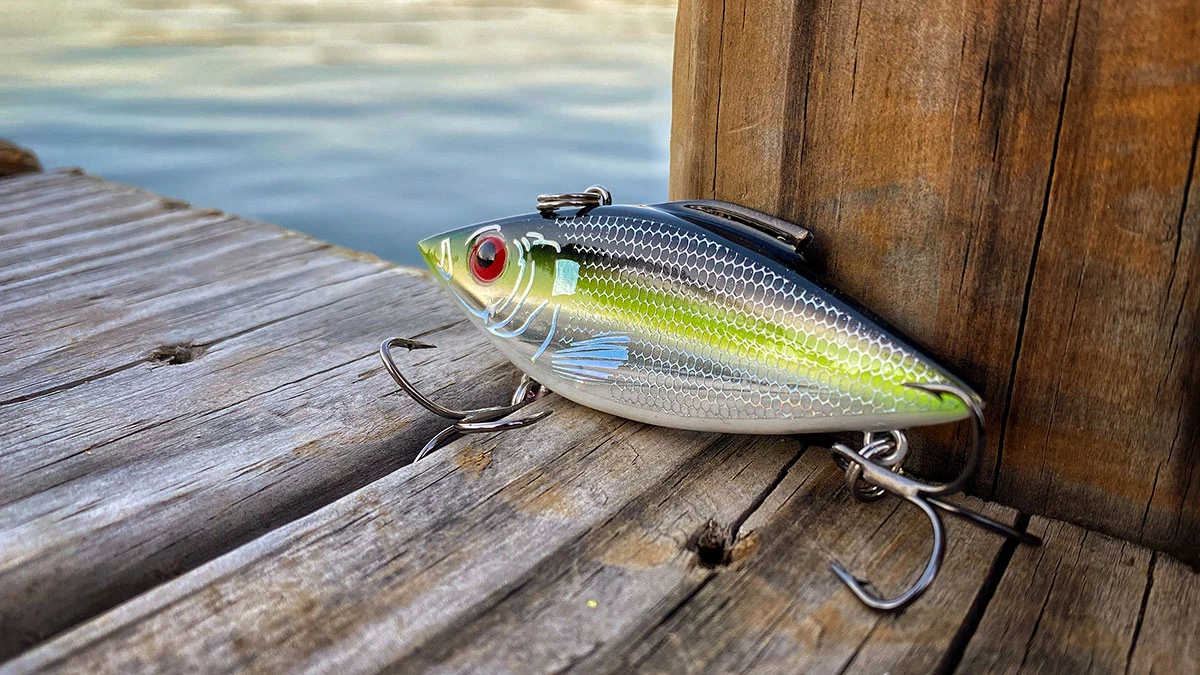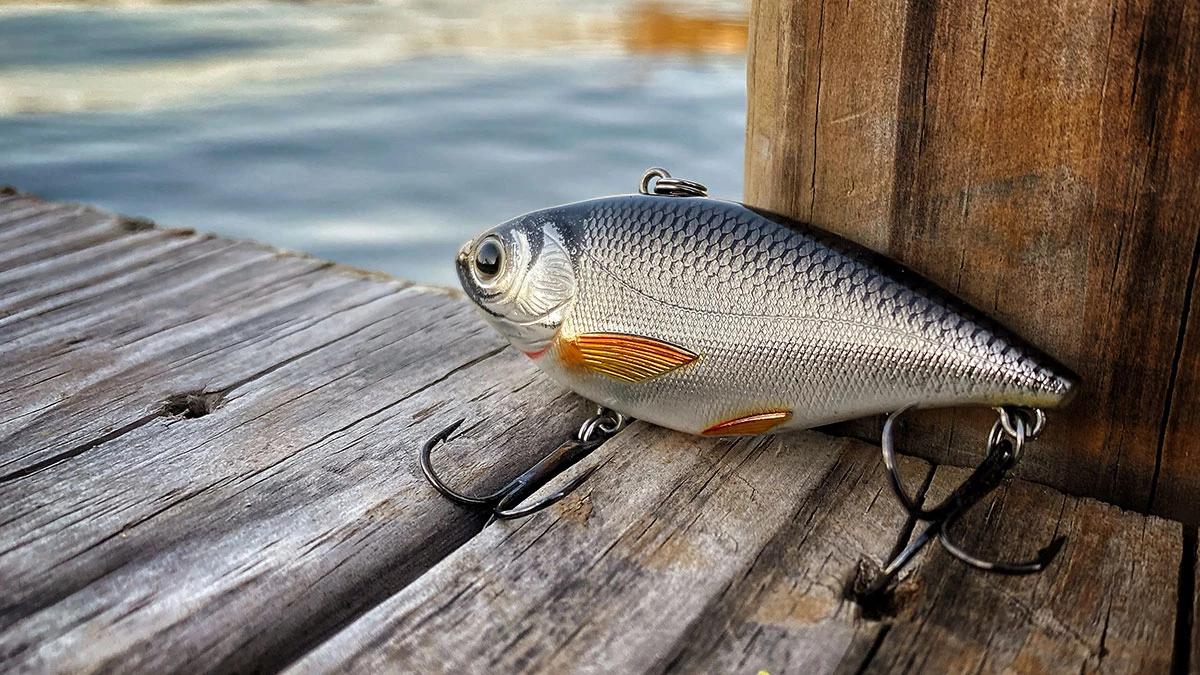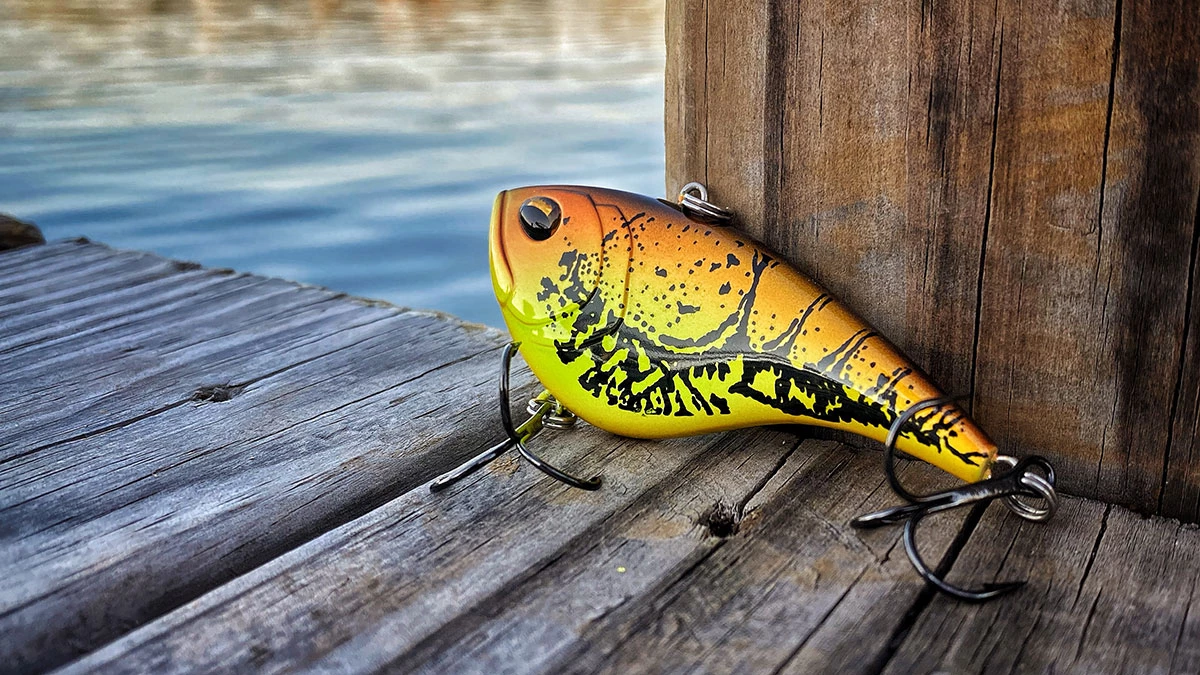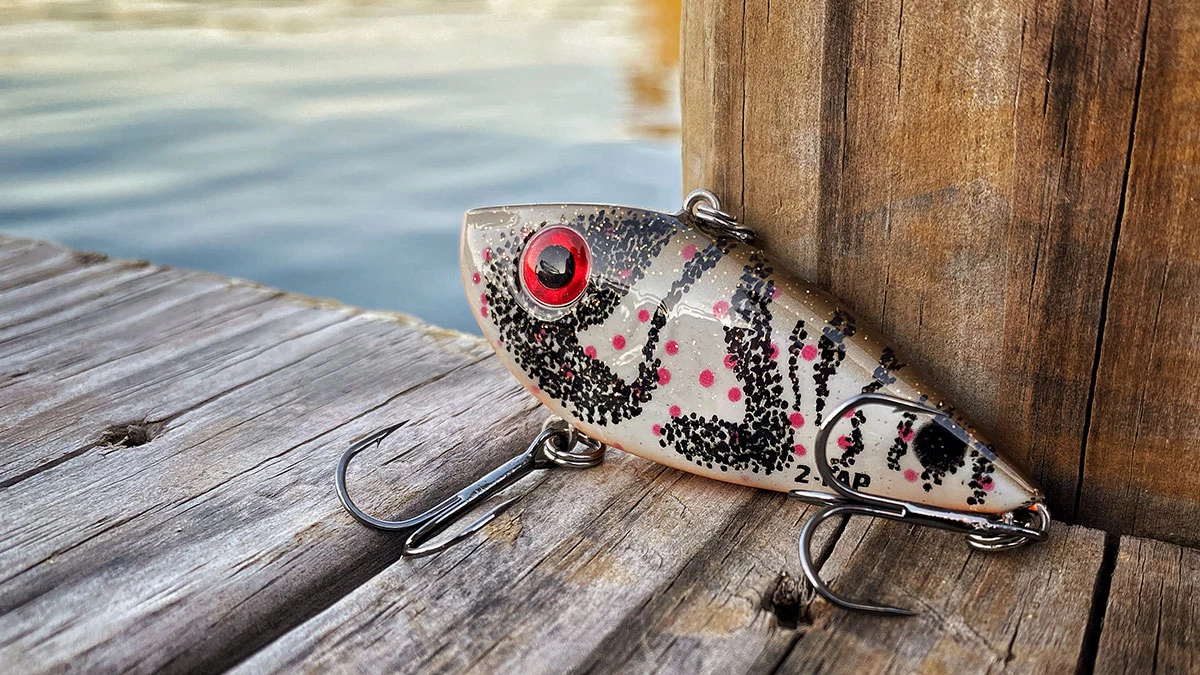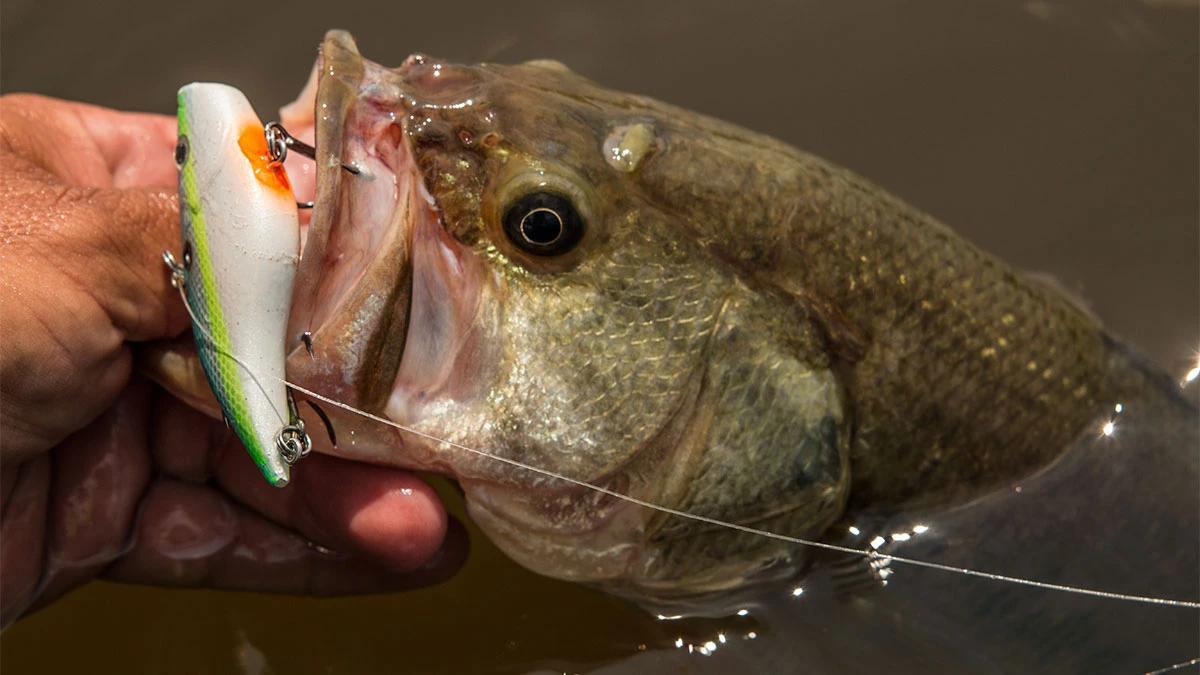Lipless crankbaits are an excellent choice for a myriad of bass-fishing situations. Whether you need to cover large expanses of water in short order or draw reaction strikes from big bass hanging around submerged vegetation, these lipless crankbaits are an outstanding way to elicit violent bites and catch a lot of fish.
It’s important to understand, however, that the market is saturated with these bass-fishing lures and it can be quite difficult to make a decision when you’re staring at a wall of lures before you head to the checkout line or finalize your online shopping cart. We can get in the weeds pretty easily when it comes to figuring out which lipless crankbait to buy but to be honest, it doesn’t have to be very complicated.
When choosing the best lipless crankbait for fishing, we recommend considering the following factors when making your decision:
- Price
- Sound
- Action
- Components
- Size
Before we get into the details about particular lures, I think there are a few important things to think about before you make a decision.
LIPLESS CRANKBAIT SIZE RECOMMENDATIONS
Again, you can get carried away in a hurry when you’re looking at a bunch of different lipless crankbait sizes. In my opinion, however, I think you can break it down into just a few different categories. Keep in mind as we run through these various sizes, that each manufacturer has different weights and sizes so each lipless crankbait you find isn’t going to be these exact weights. But as long as you can get close, you will be just fine. Here are the most common size options for anglers:
1/4-ounce: Great for casting on a medium-action casting or spinning rod for schooling bass near the surface. You’ll see this activity most often during the fall and summer months, so it’s a good idea to always have a smaller lipless crankbait rigged and ready to cast at a moment’s notice.
1/2-ounce: This is probably the most all-purpose size, if that makes sense. Whether you’re bombing casts around flats in the fall as bass ambush baitfish or ripping the lure through aquatic vegetation, it’s tough to go wrong with this lipless crankbait size. I’m a fan of a medium-heavy rod to help facilitate longer casts. If you’re overwhelmed, confused or just looking to dip your proverbial toe in the lipless crankbait game, I certainly recommend grabbing a few 1/2-ounce baits and going to town. You can catch a bunch of fish on ‘em without buying a specialized rod.
3/4-ounce: These heavier lipless crankbaits are pretty popular around big-bass fisheries that feature a lot of submerged vegetation. The added weight allows you to make insane casts and cover a bunch of water, which is a huge benefit when you’re trying to dissect trophy fisheries filled with vegetation. You’re going to need 40- to 50-pound braided line for this and a heavy-action, parabolic rod. It’s a big more of a specialized technique but when you get on a bite like this, it can absolutely blow your mind. If you frequent fisheries in Texas, Alabama or California, don’t overlook these larger lipless crankbaits.
LIPLESS CRANKBAIT LINE SIZE
I prefer to keep my fishing line selection fairly simple when I’m fishing a lipless crankbait. Although it’s not terribly complicated, I wanted to quickly touch on this to ensure you have a good experience with these lures.
12- to 15-pound fluorocarbon: If you’re fishing a 1/4-ounce lipless crankbait around open water and balls of baitfish, I recommend using these two diameters. The smaller diameter, the longer casts you’re able to make. So if you want to reach schooling fish, I’d probably suggest using 12-pound fluoro. But if you’re simply running down the bank covering water and possibly encountering hard cover, 15-pound is likely a better option.
20- to 25-pound fluorocarbon: I like to use these two sizes when I’m using a 1/2-ounce or 3/4-ounce lipless crankbait covering a bunch of water. You never know when you’re going to run across stumps, submerged laydowns or other impediments so it’s good to use a bit larger diameter with these heavier lures.
40- to 50-pound braided line: If you’re targeting any type of vegetation with a 1/2-ounce or heavier lipless crankbait, I strongly suggest using braided fishing line. Heavier fluorocarbon will work in a pinch, but the coarser braided line cuts through the grass really well. Essentially, when you’re working that lipless crankbait through the salad, you can jerk and pop your rod tip when you feel your hooks bogging down in the grass. The braided line in front of your lure will actually cut through the vegetation and free your lure quickly. When the bass are buried in this stuff, they’ll often smoke your lipless crankbait right when you jerk it free from the grass.
Now that we have the basics out of the way, let’s dig into the best lipless crankbaits for 2023. I’ve spend hundreds of hours on the water with these lures and I can personally vouch for each one of them. No matter what you choose from this list, I don’t think you can go wrong.
BEST LIPLESS CRANKBAITS FOR 2023
BEST CASTING LIPLESS CRANKBAIT: DUO REALIS G-FIX VIBRATION TUNGSTEN LIPLESS CRANKBAIT
I’m not quite sure why this lipless crankbait doesn’t get more attention but I honestly don’t know if I’ve ever used a bass-fishing lure that casts better than this one. At 3/4-ounce, of course it’s going to cast better than lighter options but the ultra-thin profile offers practically zero wind resistance while it’s in flight, which results in incredible casting distance. I’ve been using this lipless crankbait for a long time and I purposely spool extra line onto the reel with which I throw it; you’ll cast to your backing line almost every single time.
You can fish this lure at quickly as you’d like and you’ll never have to worry about it “blowing out” or spinning throughout the retrieve. So if you want to run down a big expanse of water and cover it quickly, I can’t think of a lipless crankbait I’d recommend much more than this one.
Read our full review here: Duo Realis G-Fix Vibration Tungsten
BEST LIPLESS CRANKBAIT AROUND COVER: BERKLEY WARPIG LIPLESS CRANKBAIT
I first discovered this lipless crankbait while fishing in rural Arkansas. It was a protoype at the time and I bet we caught a hundred bass on it in just one afternoon. The fish were positioning around pinch points that day and they were hanging out around root balls and stumps. Lipless crankbaits are known for getting snagged around hard cover but the blunt-nose design of this lure proved to be very effective at allowing me to avoid snags.
You won’t experience many snags with this bait, so if you’re targeting stump flats or even small ponds from the bank, this is an outstanding option. The treble hooks are awesome too, as it comes with Fusion19 hooks. It’s one of those baits that’ll do the job straight out of the package.
Read our full review here: Berkley Warpig Lipless Crankbait
BEST BUDGET LIPLESS CRANKBAIT: COTTON CORDELL SUPER SPOT LIPLESS CRANKBAIT
It’s not always necessary to spend a pile of money to catch bass. When I was coming up in the fishing world, I was dang-near broke so I always appreciate a fairly priced bass-fishing lure. With that being said, I’ve been using a this lipless crankbait for years with great results. With a higher-pitched rattle and a really tight-wiggling action throughout the retrieve, it has proven to be an awesome choice in both soft and hard cover.
I do suggest, however, changing the hooks before you start fishing with it. The stock hooks are pretty flimsy and can bend under a heavy load, so keep that in mind before you rig it up and start casting.
MOST UNIQUE FALL ON SLACK LINE: STRIKE KING RED EYED SHAD LIPLESS CRANKBAIT
This is easily one of the most popular lipless crankbaits on this list and for very good reason. It’s always good practice to sporadically pause your retrieve when fishing a lipless crankbait because the random cadence changes can elicit reaction strikes from nearby bass. This lure is special because as it falls on slack line, its body design and free-floating rattles give it an extremely unique shimmy as it falls to the bottom. The large majority of lipless crankbaits just fall straight to the bottom but this one has a great shimmy that draws a lot of bites on slack line. If you fish a lot of pressured fisheries, don’t overlook this one.
Read our full review here: Strike King Red Eyed Shad
BEST-LOOKING LIPLESS CRANKBAIT: YO-ZURI RATTL’N VIBE ONE KNOCK LIPLESS CRANKBAIT
While it’s the best-looking lipless crankbait on this list, don’t think for a second it doesn’t perform at the highest level. I’ve said it for years and I really don’t understand how Yo-Zuri can keep putting out such high-quality lures at such a low price point. Either way, I’m not going to complain one bit.
It features a single-knock rattle system that gives it a bit different sound than many others on this list. While it also looks good, it’s important to understand that it comes with really solid components as well. From the line tie, to the split rings to the hooks, you’ll be able to fish this lipless crankbait straight from the package without a worry in the world.
Read our full review here: Yo-Zuri Rattl’n Vibe One Knock
OTHER GREAT LIPLESS CRANKBAIT OPTIONS FOR THE MONEY
RAPALA RIPPIN RAP LIPLESS CRANKBAIT
While fishing this lure, I’ve noticed that bass tend to really choke it whenever they decide to bite. So instead of hooking ‘em right outside of the mouth and possibly losing them next to the boat, the bass seem to attack this particular lipless crankbait really aggressively. Who knows the real reason behind it but in my personal opinion, I think these oversized eyes have a lot to do with it.
When you’re fishing any lure, sometimes large eyes and big dots on the side of the body can make bass chase a lure a bit more; it’s kind of like a cat chasing a laser pointer. So that’s my theory on this bait. It also comes through grass very well and features excellent hooks, which makes it another great option you can cast right out of the package without a bunch of modifications or tinkering.
Read our full review here: Rapala Rippin Rap Lipless Crankbait Review
BILL LEWIS RAT-L-TRAP LIPLESS CRANKBAIT
There’s absolutely no way someone can but a list together like this and not include this lure. It’s also one of the most versatile options on this list because it comes through grass fairly well and tends to excel covering vast expanses of water. I like that you can find ‘em at just about any tackle shop around the country and they’re super easy to fish. They’re loud, flashy and draw a bunch of attention from nearby bass.
It’s also worth noting that this lure comes with Mustad Triple Grip hooks which is a huge plus in my opinion. These hooks are some of my absolute favorites for fast-moving reaction baits so I’m really glad they’re already on the Rat-L-Trap.
Read our full review here: Bill Lewis Rat-L-Trap Lipless Crankbait
LIVETARGET GOLDEN SHINER VIBRATION TRAP LIPLESS CRANKBAIT
This is perhaps one of the more realistic baits on this list and although it might not jump off the shelf at you, it’s a solid option if you’re having a tough time making a decision. It’s not my favorite grass-fishing lipless crankbait but when it comes to targeting open-water schooling fish and other active fish around sparse cover, this is a good choice.
The components are good, the action is good and the colors have a really nice realistic look to them. This lure tends to fly under the radar, but don’t let that spin you out. If you run across one in your local tackle shop, give it a try. I bet you’ll be impressed.
JENKO RIP-KNOCKER LIPLESS CRANKBAIT
The Rip-Knocker is another underappreciated lipless crankbait on the market. It combines nice color schemes with a cool-sounding rattle which I’ve found to be pretty effective in tough conditions. While many manufacturers seem to stick with either high- or low-pitch rattles in these kinds of baits, Jenko combined the two to make a unique sound the bass don’t hear very often. It comes through grass well but my favorite way to fish it has been around large flats as bass chase baitfish into shallow creeks throughout the fall months.
You’ll also appreciate that it comes stock with VMC trebles which are super strong, very sharp and last a long time. This is a high-quality bait you should try if you ever run across one.
MEGABASS VIBRATION-X ULTRA LIPLESS CRANKBAIT
For the true tackle aficionado, the Vibration-X Ultra offers a beautiful profile and underwater action but it also comes at a higher price. Featuring internal balancers, you’re able to reel this lipless crankbait at virtually any speed without it losing its center. It comes through all kinds of cover quite well and every bass I’ve caught with it have choked it which has resulted in a super-high hookup ratio.
The colors are beautiful and if you’re someone who values the utmost craftsmanship in your bass fishing lures, this is one you’ll want to put on your radar.
STRIKE KING RED EYED SHAD TUNGSTEN 2 TAP LIPLESS CRANKBAIT
A newer version of the original Strike King Red Eyed Shad, the Tungsten 2 Tap maintains that unique shimmy on slack line which is a big-time bite getter in a myriad of situation. What makes it unique, however, is the specially designed tungsten sound chamber that gives it a really cool-sounding rattle underwater. I have a lot of fishing buddies who frequent some of the most pressured fisheries in the country and they’ve enjoyed continue success on this particular lipless crankbait.
I also like how it has such big eyes as reasons we discussed earlier and it also comes with sharp hooks and quality components. If the fishing turns off and gets tough for you, don’t hesitate to give this one a try.
Read our full review here: Strike King Red Eyed Shad Tungsten 2-Tap
THE BOTTOM LINE
It’s going to be tough to go wrong with any lipless crankbait on this list. While each model has its special applications, you can pretty much rig up anything in this article and expect to catch fish on your home fishery. Keep it simple, experiment with a few different sizes and follow the line type and diameter guidelines we discussed at the beginning of this article. If you do those things, you’ll be catching a bunch of fish in no time.


